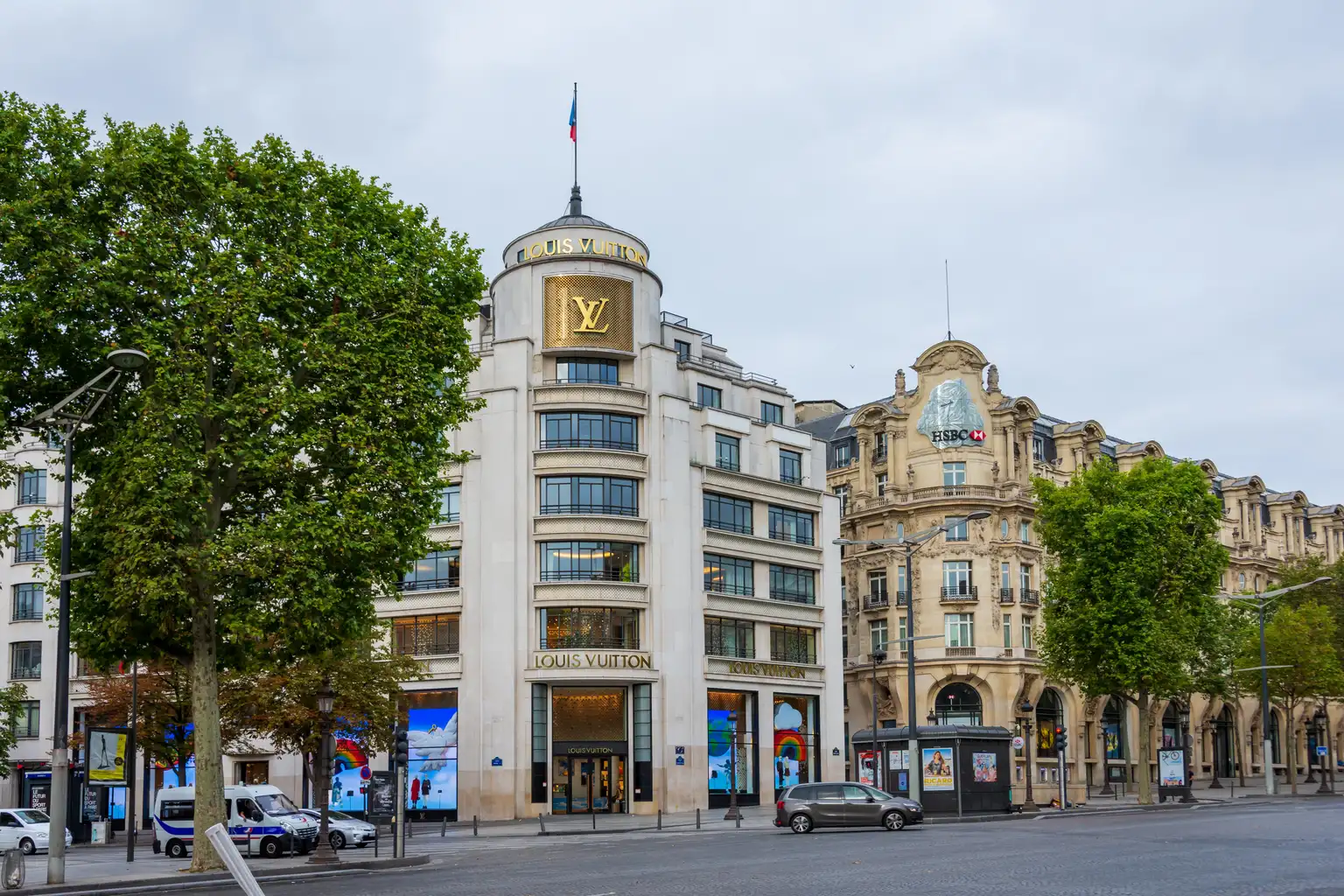LVMH: If Not Now, When? A Deep Dive Into a Luxury Giant’s Opportunity
A 44% Fall That Might Be Misunderstood
LVMH, the world’s largest luxury goods company, has seen its share price drop 44% from its all-time highs. At first glance, this might raise red flags. But dig deeper, and it becomes clear this isn’t a signal of long-term trouble—it’s a market correction after an extraordinary post-pandemic boom.
Between March 2020 and April 2023, LVMH stock tripled, delivering a 46% annualized return. That pace was unsustainable for any fashion conglomerate, even one as powerful as LVMH. Now, with a 5-year annualized return of 12.5%, the stock looks far more grounded. This “normalization”, as the company’s management calls it, might actually signal a buying opportunity—not a warning.
Expectations Are in the Basement
Since mid-2023, analyst revenue estimates for LVMH have dropped by approximately 20%, and profit margins have also softened. This aligns with the 44% price drop, but may overstate the downside.
Over the past eight quarters, LVMH missed revenue expectations in six. While that streak is disappointing, it’s built a scenario of very low expectations—which could set the stage for upside surprises. With forward guidance already trimmed, even modest outperformance could rekindle investor interest.
What’s Behind the Declines? It’s Not Just LVMH
In Q1 2025, LVMH reported a double-digit sales decline in Asia, its most vital region. The Fashion & Leather Goods division, its largest business unit, fell by 5%. Wines & Spirits dropped too, although that segment only makes up 6% of overall revenue. Europe offered a small bright spot with 2% growth.
But this isn’t just about LVMH—it’s an industry-wide slowdown. Demand in China has been volatile, and luxury spending globally is facing post-pandemic adjustments. LVMH isn’t immune, but it’s not uniquely vulnerable either.
Could Global Tensions Work in LVMH’s Favor?
One lesser-discussed trend may offer upside potential: boycotts of American brands. With rising global tensions, particularly involving the U.S., consumers in countries like China and parts of Europe are turning away from American products.
While Nike and LVMH may seem like different beasts, they overlap more than you’d think. According to McKinsey, Aspirational Luxury Consumers (ALCs)—middle-income buyers aiming to access luxury—make up 50% of the luxury market’s value. These consumers may shift spending from U.S. labels to European ones, especially those with heritage and prestige like LVMH’s.
If this trend strengthens, dollars, euros, yuan, and yen currently spent on American brands could migrate to LVMH’s portfolio.
Margins Are Down—But Still Strong
Let’s talk margins. Pre-pandemic, LVMH averaged 20% operating margins. During the boom, those rose to 26%. Now, they’ve fallen to 23%—still above the historical norm.
Profitability is dipping, yes—but it’s not collapsing. LVMH’s Return on Investment (ROI) and other performance metrics are slightly lower but remain within acceptable long-term ranges. Management isn’t panicking, calling this a reversion to trend rather than a structural weakness—and the data backs that up.
Valuation: The First Time in Years LVMH Looks Cheap
LVMH now trades at an adjusted P/E of 19, compared to its 20-year average of 22. In a sector where valuations tend to run hot, this is a rare discount.
Compare that to peers:
- Hermès trades at a staggering P/E of 54
- Nike, despite challenges, trades higher than LVMH
- Kering trades closer to LVMH but lacks its brand strength
For long-term investors, LVMH now represents one of the most undervalued options in the luxury space.
Cash Flow vs Cost of Capital: The Math Works
Let’s quantify the valuation story using two classic measures: earnings yield and free cash flow yield compared to the cost of capital.
- Earnings yield: With a P/E of 19, LVMH yields 5.3%. With a Cost of Equity of 8.4%, this implies only 3.1% residual growth is needed for fair valuation.
- Free Cash Flow yield: At €14 billion in FY2024 FCF and a €262 billion enterprise value, LVMH yields 5.4%. That compares to a WACC of 7.6%, needing only 2.1% in residual growth.
These assumptions are very modest—and highly achievable for a business of LVMH’s caliber.
4 Reasons LVMH May Be a Strong Buy Now
1. Negative Sentiment Creates Opportunity
After multiple disappointing quarters, expectations are extremely low. Beating them might not be hard.
2. Valuation Is Attractive
LVMH trades below its historical averages and cheaper than its top peers. CAPM-based analysis confirms the stock is undervalued.
3. Temporary Industry Slowdown
Luxury demand has softened, but this is cyclical. LVMH remains a dominant, diversified player.
4. Macro Tailwinds Could Help
Aspirational consumers may redirect spending toward European luxury amid global boycotts of U.S. products.
Final Thoughts: A Global Leader on Sale
LVMH is more than just another luxury stock—it’s a flagship of global fashion and culture. The recent drawdown feels less like a red flag and more like a rare opening. Between normalized earnings, manageable expectations, and valuation support, LVMH offers one of the most compelling international opportunities today.
